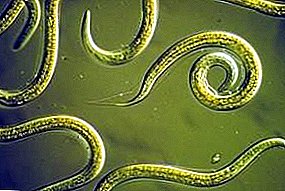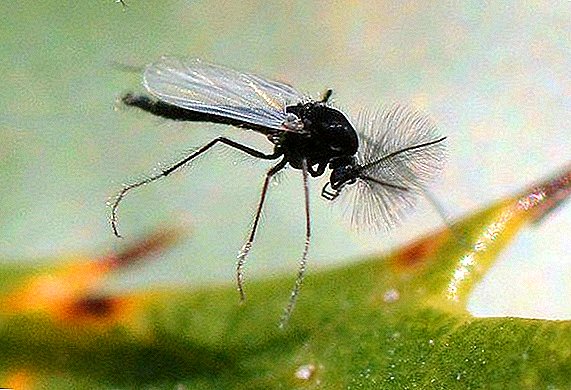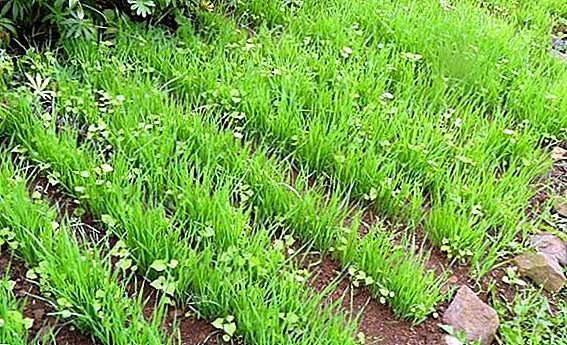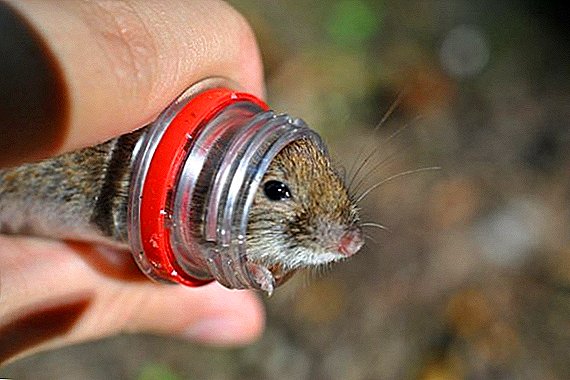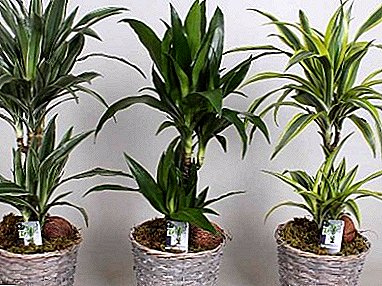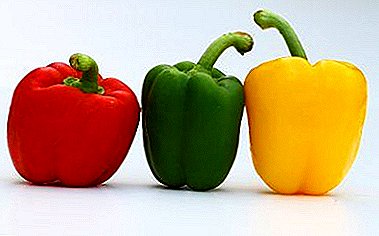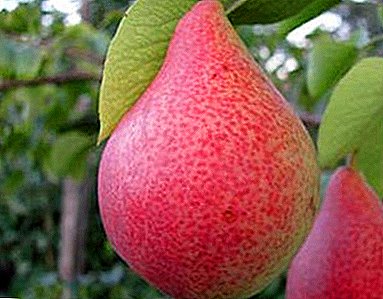
In a popular song, to create a full image of the garden, it says: "apple and pear blossomed." Yes, and every amateur gardener, laying a garden, the first thing planted an apple seedling, and then a pear.
And so, for several centuries, after this type of rosaceous fruit trees came to us from sunny Greece through Poland. So he called his fruit in the Polish manner - Dula.
For a long time, Russian frost was an obstacle for the promotion of this fruit plant to the north of Russia. But the success of selection made the pear a familiar instance of even Siberian gardens. Such is pear Svarog - description and photo of the fruit later in the article.
Breeding history
Creature frost-resistant hybrids for Siberia - the general goal of the team NIISS them. M. Lisavenkowhich he has been practicing since 1973. Now branches of research institutes and experimental gardens are located in three regions: Tomsk region, Barnaul, Altai Republic.
 Mikhail Afanasyevich Lisavenko, who devoted himself to gardening in Siberia and created more than 128 varieties of fruit bearing crops, no longer exists, but selection work continues among the new products - winter-hardy varieties of pears, named after the Slavic gods: Svarog, Perun, Veles, Lel "," Kupava ".
Mikhail Afanasyevich Lisavenko, who devoted himself to gardening in Siberia and created more than 128 varieties of fruit bearing crops, no longer exists, but selection work continues among the new products - winter-hardy varieties of pears, named after the Slavic gods: Svarog, Perun, Veles, Lel "," Kupava ".
Our pre-Christian ancestors had Svarog, the earthly incarnation of the Sort, the father of everything. What semantic load carries this name of an interspecific hybrid?
Advantages:
- undeniable resistance to the cold winters of Siberia (down to -30 ° C);
- ripening of fruits until the first frost (September-October);
- the regularity of the average volume of the crop;
- good presentation;
- storage capacity (up to 3 months);
- value of consumer qualities;
- raw material value in processing;
- resistance to pathogenic fungi and bacteria.
Pear varieties are distinguished by good winter hardiness: Severyanka, Bere Russkaya, Yakovlevskaya, Uralochka and Chizhovskaya.
Disadvantages:
- fruit size (below average size);
- self-infertility and dependence on the pollinator;
- crown thickening;
- susceptibility to consequences of drought.
Reference: The pear tree is very light-loving, but suffers from drought; its frost resistance is clearly inferior to the varieties of cherry and apple, which are popular in the same regions.
Specific features
 Pear as a plant is found in nature in the form of a bush and a tree.
Pear as a plant is found in nature in the form of a bush and a tree.
Historic areas of growth of pears of different varieties: Persia, the South of Europe, the Caucasus, the Pamirs, the Far East and the distant Tasmania.
All these species can be divided by maturity into:
- early (for Siberia, early-autumn);
- autumn (later-autumn for Siberia);
- winter (not typical for Siberia).
- Common pear - the wild form of the fruit tree, differing in morphological features.Depending on the habitat, 60 species are classified, here are a few of them:
- Russian pear - it is distinguished by high drought tolerance and not too high winter hardiness: the growing area is Central Russia;
- snow pear - promising rootstock from the mountain regions of the Caucasus and Central Asia;
- Caucasian pear - grows at an altitude of one and a half thousand meters above sea level; effective in breeding with cultivars for high yields;
- Ussuri pear - Far East endemic with a very high level of winter hardiness (up to -50 ° C);
- homemade pear - viable local varieties used as a universal stock;
- kayon pear - type of pears from the western Pamir with an atypical form of triangular fruits, which acquire consumer value only after two weeks of aging in the ground, being prikopannymi;
- Chinese pear - Eastern type of culture, characterized by richness; An unvaccinated tree is characterized by sour fruits.

- Garden pear - tree (from 5 to 25 meters high), 5000 varieties are presented with average ripening periods - August-October.
Commercial and cider varieties go to industrial processing, and the dessert is brought to the consumer’s table.
A photo




Generic Inheritance
Variety "Svarog" was created by crossing, different winter hardiness, Ussuri pear and "Bere Bosc" - an old French variety late ripening.
What gave parents a new hybrid form:

- from Bere Bosk variety - inherited resistance to scab and other fungal diseases, the commodity attractiveness of fruits and their unusual taste; yield growth in the process of growing a plant; undemanding to soil composition with sufficient irrigation;
- from Ussuri pear - ability to variability in the process of clonal selection; exceptional frost resistance; tolerance to drought; undemanding to the composition of the soil.
True, the fruits of this decorative variety are unpleasant to the taste and small in size, and they will have to wait 20 years after planting.
Description varieties Svarog
Since 1996, the Svarog variety has been included in the State Register as recommended for cultivation in areas Western and Eastern Siberia, the Volga-Vyatka region.
In these regions, the following pear varieties are doing well: Hera, Cathedral, Krasnobakaya, Elena and Vernaya.
This is a medium-sized plant with a lush rounded crown and the following morphological characteristics:

- trunk the tree is covered with gray-brown, slightly flaky bark, with well-formed skeletal branches;
- young shoots covered with a dark, red-brown skin, with an edge at the ends; shoots are curved in an arc;
- kidneys pears of two types: generative (where flowers are formed) and vegetative (for laying leaves); the first - larger and rounder, the second - sharper and smaller;
- leaves a peculiar elliptical shape with a twisted screw tip; small, light green, with a wrinkled plate and a light edge; at the end of the vegetative period fall;
- flowers are self-infertile, with a conjoined ovary and without anthers; medium size, 5 petals, flowers collected in umbrella inflorescences;
Important: For pollination of this variety are effective next to the planted pears "Hanged" and "Century". Without pollination on a pear tree, several fruits may appear, but they will look defective and will not give seeds.

- fruits weighing up to 80 grams have a rounded shape, a rough skin without shine, by the time of full aging - yellow color and a diffuse blush on the sunny side; stony cells well visible under the skin in the form of greenish dots; large dark seeds are enclosed in closed cells; medium stem;
- juicy tender flesh of cream color; taste characteristics are determined in 4.5 points; composition sugars and ascorbic acid represented equally - 9.5%;
- the fruitfulness of the variety comes on the 4th year; the process is regular, the volume of fruits is moderate;
- full ripening ends by early October;
- average yield from a tree in the Altai nursery - 19 kg;
- resistance to fungal infections high;
- winter hardiness - exceptional.
The taste of pears of this variety depends on the temperature regime: in hot summer they are sweet, in rainy - fresh and watery.
Pears can boast of excellent taste qualities: Cosmic, Marble, Karataevskaya, Kupava and Krasulia.
Full ripening is manifested in the shedding of fruits. Harvested before shedding, pears have a reduced shelf life.
Watch the video about Svarog pear.
Fruit use
In this fruit plant absolutely everything can be useful to a person:

- fruit - in the confectionery and canning industry (marmalade, candy, candied fruits, juices, wine, cider, kvass, etc.);
- leaves - in the prevention and treatment of various diseases;
- wood - in furniture production, making models and forms, finishing cars, to simulate valuable ebony woods;
- the plant itself - in landscape design and to strengthen the sand slopes.
Agrotechnology
Svarog pear variety - agrotechnical description:
- For proper planting of pears, the choice of place is especially important: most warm and protected in the garden. You can grow a plant with a bush, on a wire base - a trellis, in the near-wall planting - fan palmette. The best time to plant a pear is autumn.
- Choosing seedlings, it is worthwhile to give preference to those of them whose root system is thicker, which guarantees fast growth of the plant. Before planting, remove damaged roots and dip them in a heteroauxin-based soil talker.
- In the harvested pit is formed from poured soil slide, on which the roots of the seedling are straightened. Drive in the support peg, to which the trunk of the tree will be attached.
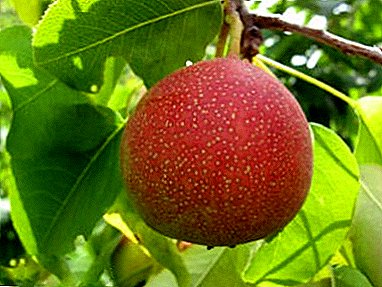 The root collar should be left above the ground (6 cm).
The root collar should be left above the ground (6 cm).- Roots fall asleep and gently crush. Form a hole with a diameter of 40 cm, into which water is poured in (4-5 buckets), add humus and finally - mulch with peat. After two weeks, watering can be repeated.
- Pruning is done for sanitary purposes (dried and broken branches), for crown formation and thinning.
- Fertilize annually organic and phosphorus-potassium compounds.
Diseases and pests
- From aphids ordinary vegetable. Helps solution "Karbofos" or "Rovikura."
- From weevil beetle - multi-tasting pipekiller. For his laying, he twists the leaves on young shoots. In combating it, collecting and burning affected leaves is effective, and spraying with Nitrofen solution (3%).
 Bacteriosis. The defeat of pathogenic bacteria spreads through the vascular system of the tree, capturing leaves, branches and, finally, the entire trunk. It is important to timely remove infected branches, preventing the spread of the parasite. The pruning is done with a disinfected instrument, and the trimming is burned. With a total defeat of the plant, the only way out is to uproot.
Bacteriosis. The defeat of pathogenic bacteria spreads through the vascular system of the tree, capturing leaves, branches and, finally, the entire trunk. It is important to timely remove infected branches, preventing the spread of the parasite. The pruning is done with a disinfected instrument, and the trimming is burned. With a total defeat of the plant, the only way out is to uproot.
Northern pear varieties are always a bit of exotic in your garden.
And the availability of this exotic became possible as a result of the continuous work of breeders and Altai fruit growers as well.



 The root collar should be left above the ground (6 cm).
The root collar should be left above the ground (6 cm). Bacteriosis. The defeat of pathogenic bacteria spreads through the vascular system of the tree, capturing leaves, branches and, finally, the entire trunk. It is important to timely remove infected branches, preventing the spread of the parasite. The pruning is done with a disinfected instrument, and the trimming is burned. With a total defeat of the plant, the only way out is to uproot.
Bacteriosis. The defeat of pathogenic bacteria spreads through the vascular system of the tree, capturing leaves, branches and, finally, the entire trunk. It is important to timely remove infected branches, preventing the spread of the parasite. The pruning is done with a disinfected instrument, and the trimming is burned. With a total defeat of the plant, the only way out is to uproot.
